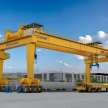
The operation of marine winches is a critical component in various maritime activities, ranging from anchoring and mooring to towing and lifting. While these powerful machines significantly enhance efficiency and productivity, their operation requires meticulous attention to safety protocols. In this article, we will explore the essential safety measures that should be followed when operating a marine winch to ensure the well-being of personnel, prevent accidents, and maintain the integrity of equipment.
Proper Training and Certification:
The foundation of safe winch operation begins with comprehensive training for the personnel involved. Operators should undergo thorough training programs that cover the specific features and functions of the particular winch they will be working with. Additionally, certification processes should be in place to ensure that operators have acquired the necessary skills and knowledge to handle the equipment safely.
Pre-Operational Checks:
Before initiating any winch operation, a series of pre-operational checks must be conducted. This includes a visual inspection of the winch and its components to identify any signs of wear, damage, or malfunction. Checking the condition of the wire rope or cable, examining hydraulic or electrical systems, and ensuring proper lubrication are crucial steps in preventing unforeseen issues during operation.
Understanding Load Limits:
Every marine winch is designed with specific load capacity limits. Exceeding these limits can lead to catastrophic failure, posing a serious risk to personnel and equipment. Operators must be well-versed in the load capacity of the winch they are using and adhere strictly to these limits. Overloading not only jeopardizes safety but also accelerates wear and tear on the winch components.
Securing the Work Area:
Maintaining a secure work environment is paramount to preventing accidents during winch operations. Clear communication channels should be established, and designated safety zones must be demarcated to keep unauthorized personnel away from the operational area. Adequate signage, barriers, and communication tools such as radios or signals contribute to a well-organized and secure workspace.
Personal Protective Equipment (PPE):
The use of appropriate personal protective equipment is non-negotiable when operating marine winches. This includes but is not limited to hard hats, safety gloves, eye protection, and steel-toed boots. Depending on the specific operation, additional PPE such as life jackets or safety harnesses may be required. Adhering to PPE guidelines ensures that operators are shielded from potential hazards.
Emergency Procedures:
No matter how well-prepared a team is, emergencies can still occur. Having well-defined emergency procedures in place is critical for responding swiftly and effectively to unforeseen situations. This includes protocols for shutting down the winch, administering first aid, and initiating evacuation if necessary. Regular drills and training exercises can help reinforce these procedures.
Regular Equipment Maintenance:
Proper maintenance is the cornerstone of safe winch operation. Regular inspections and servicing of the winch and its components should be carried out in accordance with manufacturer guidelines. This includes checking for corrosion, lubricating moving parts, and replacing worn-out components. Well-maintained equipment not only operates more efficiently but also reduces the risk of unexpected failures.
Weather Considerations:
Weather conditions play a significant role in the safe operation of marine winches. High winds, rough seas, or adverse weather can impact the stability and performance of the winch. Operators should monitor weather forecasts and exercise caution when adverse conditions are anticipated. In some cases, it may be necessary to postpone or suspend winch operations until conditions improve.
Communication Protocols:
Effective communication is essential for safe and coordinated winch operations. Clear communication channels should be established between the winch operator and other personnel involved in the operation. This includes using standardized signals, radios, or other communication devices to convey instructions and receive feedback.
Continuous Monitoring During Operation:
Once the winch operation is underway, continuous monitoring is crucial. Operators should remain vigilant, keeping an eye on load dynamics, tension levels, and any unusual sounds or vibrations. Immediate action should be taken if any abnormalities are detected, including stopping the operation and conducting a thorough inspection.
Conclusion:
The operation of marine winches demands a meticulous approach to safety. From comprehensive training and pre-operational checks to emergency procedures and continuous monitoring, each safety measure plays a crucial role in mitigating risks associated with winch operations. By prioritizing safety at every stage, maritime professionals can ensure the smooth and secure functioning of marine winches, contributing to a safer and more efficient maritime industry.
About the Creator
Aicrane01
Welcome to the Aicrane Blog, your practical guide to lifting solutions. Discover articles covering overhead cranes, gantry cranes, winches, steel structures, boat lifts, and more.
Website: https://steelmillcranes.com/






Comments
There are no comments for this story
Be the first to respond and start the conversation.